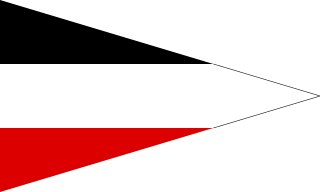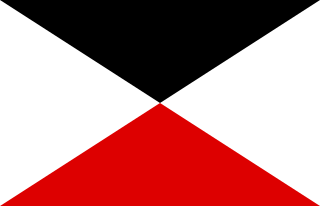
The 4th Cavalry Division was a unit of the German Army in World War I. The division was formed on the mobilization of the German Army in August 1914. The division was disbanded in 1919 during the demobilization of the German Army after World War I.
The history of the German Cavalry in World War I is one of an arm in decline.

The III Cavalry Corps was a formation of the German Army in World War I. The corps was formed on mobilization of the German Army in August 1914 and disbanded in 1919 during the demobilization of the German Army after World War I.

The II Cavalry Corps was a formation of the German Army in the First World War. The corps was formed on mobilization of the German Army in August 1914 and dissolved 23 January 1915 as the onset of trench warfare in the west negated the requirement for large cavalry formations. It was commanded throughout its existence by General der Kavallerie Georg von der Marwitz.

The IV Cavalry Corps was a formation of the German Army in World War I. The corps was formed on mobilization of the German Army in August 1914 and dissolved in January 1915 as the onset of trench warfare negated the requirement for large cavalry formations. It was commanded throughout its existence by General der Kavallerie Gustav Freiherr von Hollen.

The XXII Reserve Corps was a corps level command of the German Army in World War I.

The XXIII Reserve Corps was a corps level command of the German Army in World War I.

The XXIV Reserve Corps was a corps level command of the German Army in World War I.

The XXV Reserve Corps was a corps level command of the German Army in World War I.

The XXVI Reserve Corps was a corps level command of the German Army in World War I.

The XXVII Reserve Corps was a corps level command of the German Army in World War I.

The III Reserve Corps was a corps level command of the German Army in World War I.

The IV Reserve Corps was a corps level command of the German Army in World War I.

The VII Reserve Corps was a corps level command of the German Army in World War I.

The VIII Reserve Corps was a corps level command of the German Army in World War I.

The XVIII Reserve Corps was a corps level command of the German Army in World War I.

The I Royal Bavarian Reserve Corps / I Bavarian RK was a corps level command of the Royal Bavarian Army, part of the German Army, in World War I.

The IX Reserve Corps was a corps level command of the German Army in World War I.

The II Royal Bavarian Army Corps / II Bavarian AK was a corps level command of the Royal Bavarian Army, part of the German Army, before and during World War I.

The XXI Army Corps / XXI AK was a corps level command of the German Army, before and during World War I.


